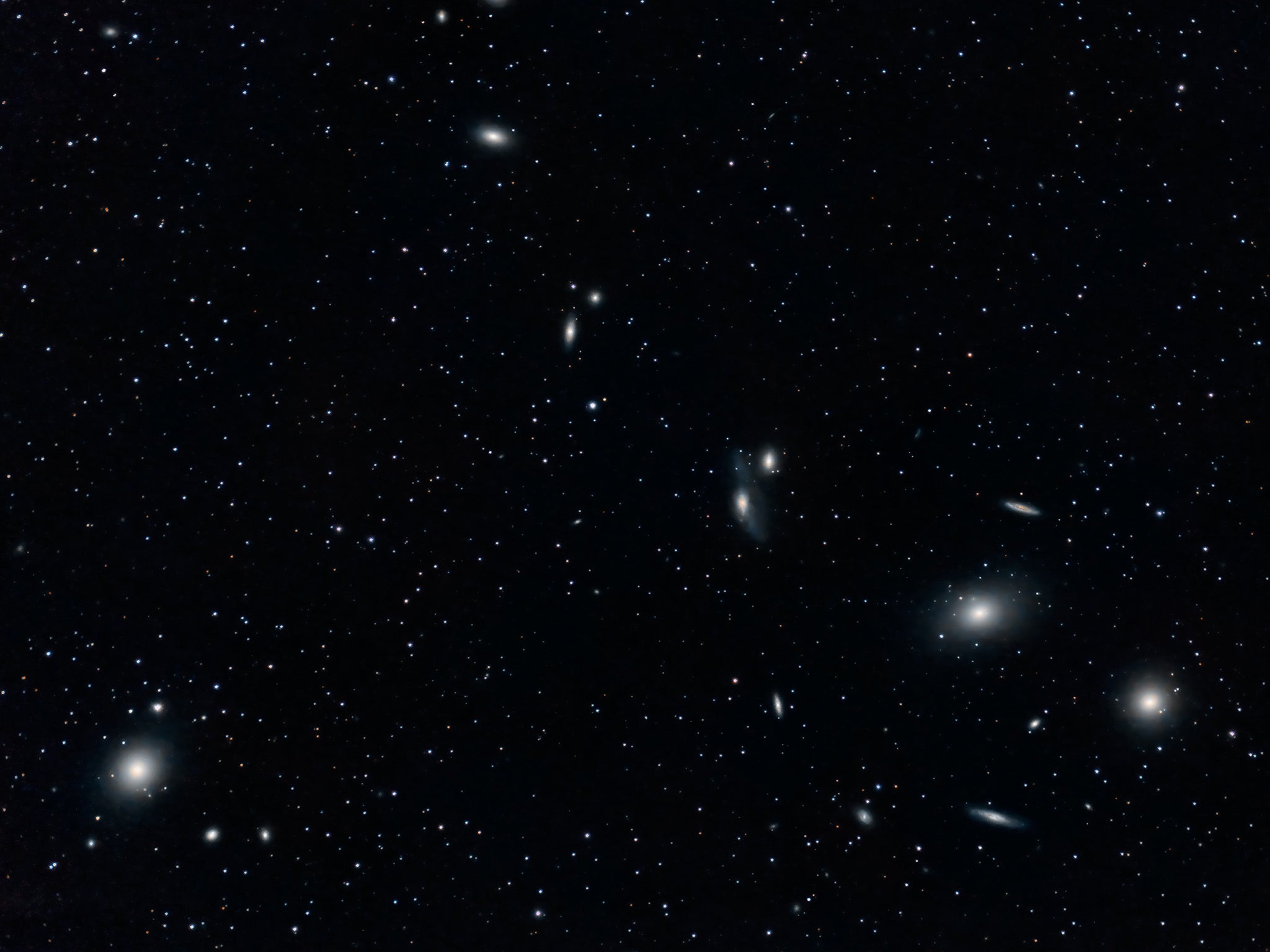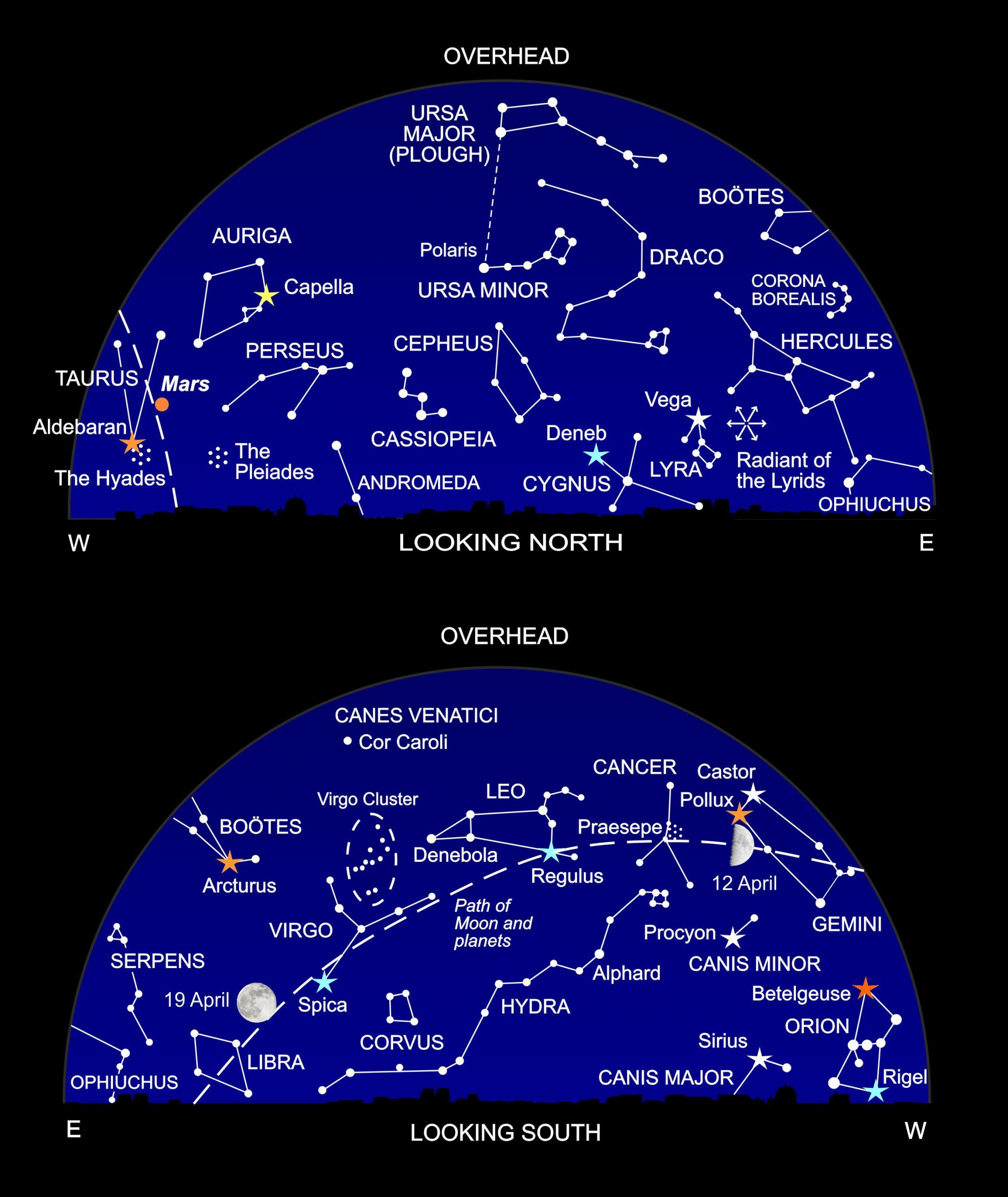Stargazing April: Explore the many galaxies of the Virgo Cluster
Heather Couper and Nigel Henbest guide you around thousands of galaxies swarming like bees

Your support helps us to tell the story
From reproductive rights to climate change to Big Tech, The Independent is on the ground when the story is developing. Whether it's investigating the financials of Elon Musk's pro-Trump PAC or producing our latest documentary, 'The A Word', which shines a light on the American women fighting for reproductive rights, we know how important it is to parse out the facts from the messaging.
At such a critical moment in US history, we need reporters on the ground. Your donation allows us to keep sending journalists to speak to both sides of the story.
The Independent is trusted by Americans across the entire political spectrum. And unlike many other quality news outlets, we choose not to lock Americans out of our reporting and analysis with paywalls. We believe quality journalism should be available to everyone, paid for by those who can afford it.
Your support makes all the difference.Two ancient constellations stride across the southern sky in springtime. One is the celestial lion, Leo, which headlined our column last month. To its left, there’s a distinct Y-shape of stars, rising upwards from a bright blue-white star called Spica.
The ancient Babylonians saw this star-pattern as their goddess of agriculture, Shala, and the name Spica means “ear of corn”. But the Greeks and Romans changed its name to Virgo, to honour their virgin goddess of justice, who fled the wickedness of Earth to reside in heaven.
The glory of the constellation lies in the bowl of the “Y”. Sweep across it with a small telescope, and you’ll spot a plethora of fuzzy patches. These are galaxies: some of the estimated 2,000 star-cities making up the gargantuan Virgo Cluster. (Or, if you’re more of an armchair astronomer, do an image search for Virgo Cluster of galaxies.)
Galaxies are gregarious. They like to live together in groups, pulled together by their mutual force of gravity. Our Milky Way is no exception. It’s a member of a small cluster – the Local Group – which comprises the giant Andromeda Galaxy, the Triangulum Galaxy, and around 40 other smaller specimens.
But our Local Group is nothing compared with the Virgo Cluster. Its thousands of galaxies are like a swarm of bees, buzzing around a giant core of enormous elliptical galaxies. These gigantic balls of old, red stars are totally unlike our vigorous, spiral Milky Way. While our galaxy is packed with glorious, glowing nebulae working hard at creating new stars, giant ellipticals are the overweight, dying remnants of the universe.
Which doesn’t mean that they don’t go out with a bang. Take M87 – the central galaxy in the Virgo Cluster. It’s one of the most massive galaxies known, home to over a trillion stars (as compared to 200 billion for the Milky Way).
M87 is surrounded by an entourage of 12,000 globular clusters – dense balls of stars created in the early universe – and at least 50 orbiting galaxies. These galaxies are key to how M87 became so big. Giant ellipticals are cannibals: they eat other galaxies, and M87 is no exception.
That behaviour may seem monstrous, but there’s an even more dangerous monster lurking right at the heart of M87: a supermassive black hole. It’s as massive as 6 billion Suns (in contrast, our own galaxy’s central black hole is only four million times heavier than the Sun).
The gas from dismembered stars plummets into the black hole, forming a whirlpool of cosmic detritus that emits a last scream before vanishing from our universe entirely. The intense gravity around the black hole channels some of the debris into a brilliant jet of energy, spewing out of the vicinity of the hole at speeds close to the velocity of light. The jet in M87 is nearly 5,000 light years long.
With all this sensational activity going on, the Virgo Cluster – and its amazing occupants – would be enough to challenge us. But there’s more. The galaxies here, like those in many other huge clusters, are moving much faster than expected. They’re being reined in by a huge gravitational force, far stronger then the galaxies themselves can muster. To explain this conundrum, astrophysicists are looking for a new form kind of matter filling the Virgo Cluster: dark matter. No one can see it; and no one knows what it is. Watch this space!

What’s up?
What’s that pair of orange lights in the western sky after sunset? Well, the brighter is the star Aldebaran, marking the eye of Taurus (the celestial Bull), while the fainter is the planet Mars. During April, Mars stays more or less in place, while Aldebaran sinks down towards the horizon. On 9 April, look out for the lovely sight of the crescent moon above Aldebaran, with Mars and the Seven Sisters star cluster (the Pleiades) to the right.
And check out the Moon on the evening of 13 April, when it passes right in front of another star cluster, Praesepe (in Cancer) – known to the ancient Chinese as “the exhalation from piled up corpses”!
Unfortunately, the Moon’s light spoils an annual treat: the Lyrid meteor shower, featuring shooting stars that stream outwards from the constellation Lyra, on the nights of 22 to 23 April.
This month, the familiar seven stars of the Plough lie almost overhead. Along with fainter stars around, they make up the larger of the two bears in the sky, Ursa Major. Follow the end stars of the Plough downwards, and you’ll come across the Pole Star, officially named Polaris. Lying at the tip of the tail of the Little Bear (Ursa Minor) this star is useful to navigators as it’s always due north.
If you’re up after midnight, you can catch giant planet Jupiter rising in the southeast at about 1am, followed a couple of hours later by Saturn. And just before dawn, Venus pops above the horizon at around 5am, outshining everything in the night sky bar the Moon.
During the second half of April, look low in the twilight to the lower left of Venus for a glimpse of Mercury, the elusive innermost planet.
Diary
5 April, 9.50 am: new Moon
9 April: Moon near Aldebaran, Mars and the Pleiades
11 April: Mercury at greatest elongation west
12 April, 8.06 pm: Moon at first quarter
13 April: Moon occults the Praesepe star cluster
14 April: Moon near Regulus
15 April: Moon near Regulus
16 April: Venus near Mercury (am)
17 April: Venus near Mercury (am)
18 April: Moon near Spica
19 April, 12.12 pm: full Moon
21 April: Moon near Antares
22-23 April: maximum of Lyrid meteor shower
23 April: Moon near Jupiter (am)
24 April: Moon near Jupiter (am)
25 April: Moon near Saturn (am)
26 April, 11.18 pm: Moon at last quarter
Fully illustrated, ‘The Universe Explained’ by Heather Couper and Nigel Henbest is packed with 185 of the questions that people ask about the cosmos, from the existence of alien life to what happened before the Big Bang
And Heather and Nigel’s Philip’s 2019 Stargazing series reveals everything that’s going on in the sky this year
Join our commenting forum
Join thought-provoking conversations, follow other Independent readers and see their replies
Comments